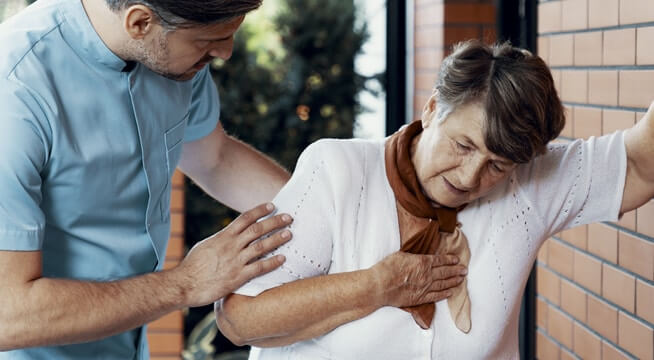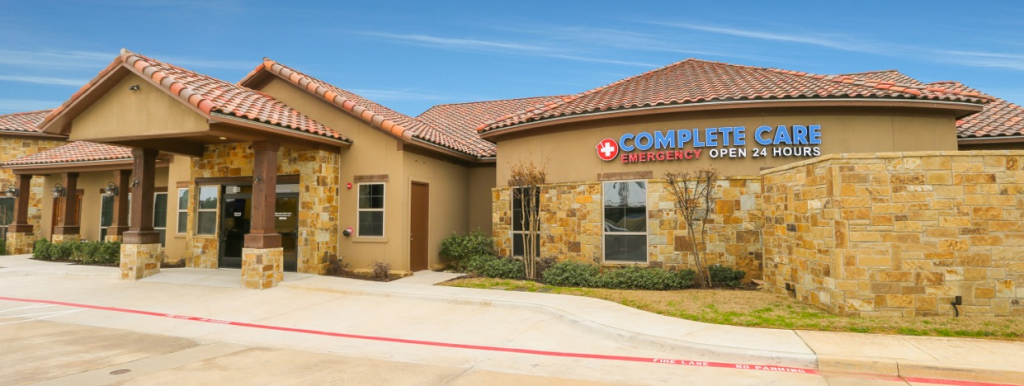Chest Pain: 10 Causes of Chest Pain & Tightness
Conditions
•
Sep 9, 2019

Chest pain can be a scary situation – from the minimally concerning heartburn to a high-risk heart attack. You may experience chest pain for a number of reasons, and while a few of them are nothing to worry about, most of them may require immediate attention or a trip to the emergency room.
How do you know if your chest pain is something to worry about, and what are your treatment options?
Common Causes of Chest Pain and Tightness
1. Muscle strain
When you’re sick or have been coughing more often, sometimes the muscles in your chest can become strained. This causes tightness or soreness in your chest that feels painful with further coughing.
By getting over-the-counter products like cough syrup, cough drops, and other chest relievers, you can minimize the pain and begin the road to recovery. You should treat your muscle strain similarly to how you would treat a sore leg muscle – with plenty of rest and relaxation.
2. Gastroesophageal reflux disease (GERD)
Also known as acid reflux, GERD occurs when fluids from your stomach move back into the throat. This can cause a burning sensation in your throat and chest. In addition to chest pain, symptoms include a bitter taste in your mouth, belching, and feeling bloated. GERD is most likely to occur after eating a large, deep-fried, or spicy meal, being overweight or obese, or being pregnant – especially when lying down soon after eating.
Heartburn from GERD can be treated with over-the-counter products like Tums and other antacids. Be sure to abide by instructions, as overuse can cause problems with the lining of your stomach.
3. Pancreatitis
If you have lower chest pain that worsens when you lie flat or lean forward, then the issue may be with your pancreas, which is located on the upper left side of the abdomen. When your pancreas becomes inflamed, it can cause pain in your abdomen and chest. The pain gets worse after meals, and you may get lightheaded when standing up. Pancreatitis can be acute or severe.
If you think your pancreas is inflamed, you should visit a doctor immediately to see if your pancreatitis is acute or severe. If it’s acute, you’ll likely receive some IV fluids, and your pancreas will be monitored for any damaged tissue. If your pancreatitis is severe, surgery may be required.
4. Gallbladder problems
Chest pains could also be a sign of gallbladder problems. After a fatty meal, if you have pain in your lower chest area or upper right-side abdomen area, then your gallbladder may be the culprit. Additional symptoms include nausea, fever, chills, darker than usual urine, and changes in bowel movements (lighter-colored stools or diarrhea).
You should visit a doctor to see if your gallbladder is functioning properly. If it’s not, you may need to have surgery to have it removed. Your doctor may also prescribe antibiotics to prevent infection post-surgery.
5. Pneumonia
Pneumonia is often associated with the winter, wet and cold months, but the truth is that pneumonia can take place regardless of the season – especially in older individuals. Pneumonia that’s causing chest pain is typically a sign of lung infection. In addition to chest pain, you may feel shortness of breath, coughing, and yellow or green mucus.
You should visit your doctor for testing and get antibiotics to alleviate any lung infection. During your recovery time, you should drink plenty of fluids and get rest. You may also take medicines to relieve any fevers.
6. Pleuritis
Pleuritis or pleurisy is caused by inflammation and irritation of the lining of the lungs or chest. This is caused by bacteria from viral infections, pulmonary embolism, or pneumothorax. The result is a sharp pain in your chest when you breathe, cough, or sneeze. The pain can radiate to your shoulders or back, and you may also experience headaches and shortness of breath.
If you’re experiencing sharp pains in your chest, you should visit your doctor. Your physician will conduct some tests to determine if you have pleuritis. If you do, they’ll prescribe you with antibiotics. You should also rest for a few days until the pain subsides or your antibiotics run out.
7. Pulmonary embolism
When a blood clot passes through the bloodstream and lodges in the lungs, the result can be acute pleuritis, trouble breathing, and a rapid heartbeat. Depending on the severity of your pulmonary embolism, you may also experience fever, spitting up blood, and shock.
If you think you might have a pulmonary embolism, you should immediately see a doctor. They’ll need to try and break up the blood clot. This can be done with blood thinners, drugs, or medical procedures. You’ll need to talk to your doctor about treatment options to determine which is best for your pulmonary embolism.
8. Coronary Artery Disease (CAD)
CAD is caused by blockage to the heart vessel. It reduces blood flow and oxygen to the heart, which causes a feeling of squeezing or pressure in your chest. While CAD is a symptom of heart disease, it doesn’t cause permanent damage to your heart. If left untreated, you could be at a higher risk of a heart attack. Additional symptoms to chest pain include dizziness, fatigue, and numbness of the chest and abdomen.
If you have coronary artery disease, your doctor will first suggest some lifestyle changes – particularly to your diet. If lifestyle changes don’t resolve the issue, they may prescribe medications or suggest surgery. You should talk to your doctor about your options and how to prevent future issues.
9. Myocardial infarction
Also known as a heart attack, myocardial infarction is caused by a reduction of blood flow through the heart blood vessels, which causes heart muscle cells to die. While the pain can be similar to that of CAD, heart attacks tend to cause a more severe, crushing pain in the center or left side of your chest. It can also be accompanied by shortness of breath, nausea, sweating, and severe weakness.
If you think you’ve had a heart attack, you should seek medical attention immediately. Your doctor will suggest immediate lifestyle changes, and depending on the severity of your condition, you may also require cardiac rehabilitation, medications, stents, or bypass surgery.
10. Pericarditis
When the sac around the heart becomes inflamed or infected, this is known as pericarditis. In addition to CAD pain, it causes a sharp, steady pain along the upper neck and shoulder muscles. It can feel worse when you breathe, swallow food, or lie on your back.
Treatments may include nonsteroidal anti-inflammatory agents to eliminate pain and inflammation. Depending on the severity of your pericarditis, your doctor may also suggest steroids, antibiotics, and colchicine.
Related: Common Causes of Chest Pain While Sleeping
Chest Pain Services in Colorado Springs and Texas
If you’re experiencing chest pains or you think you’ve had a stroke or seizure, we can provide the care you need. If you have questions or need immediate treatment, your nearest Complete Care location is ready to help, no matter the time of day or night. We offer a variety of services to help you and your family in your time of need. No appointments are necessary.
Find the Complete Care location nearest you.
